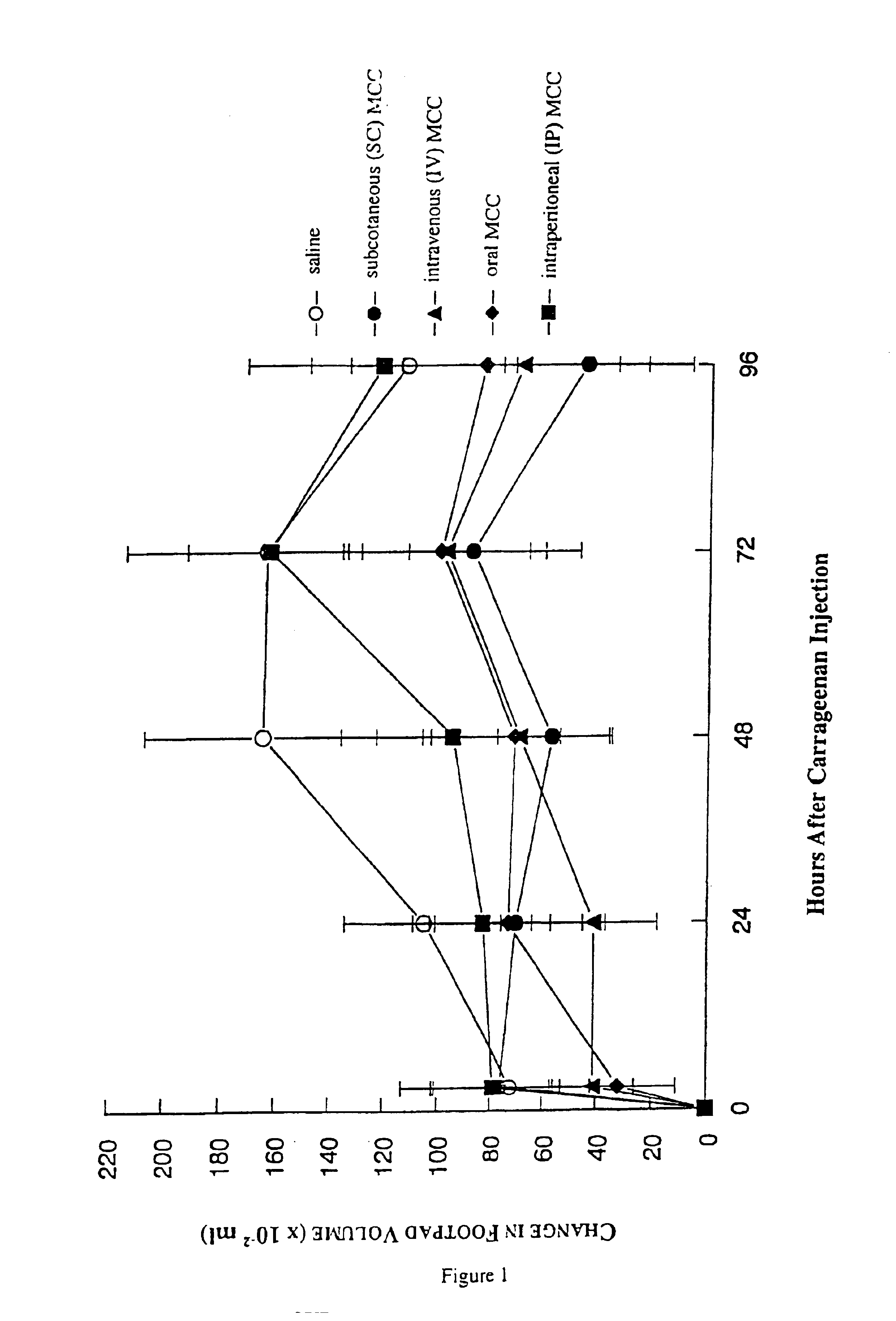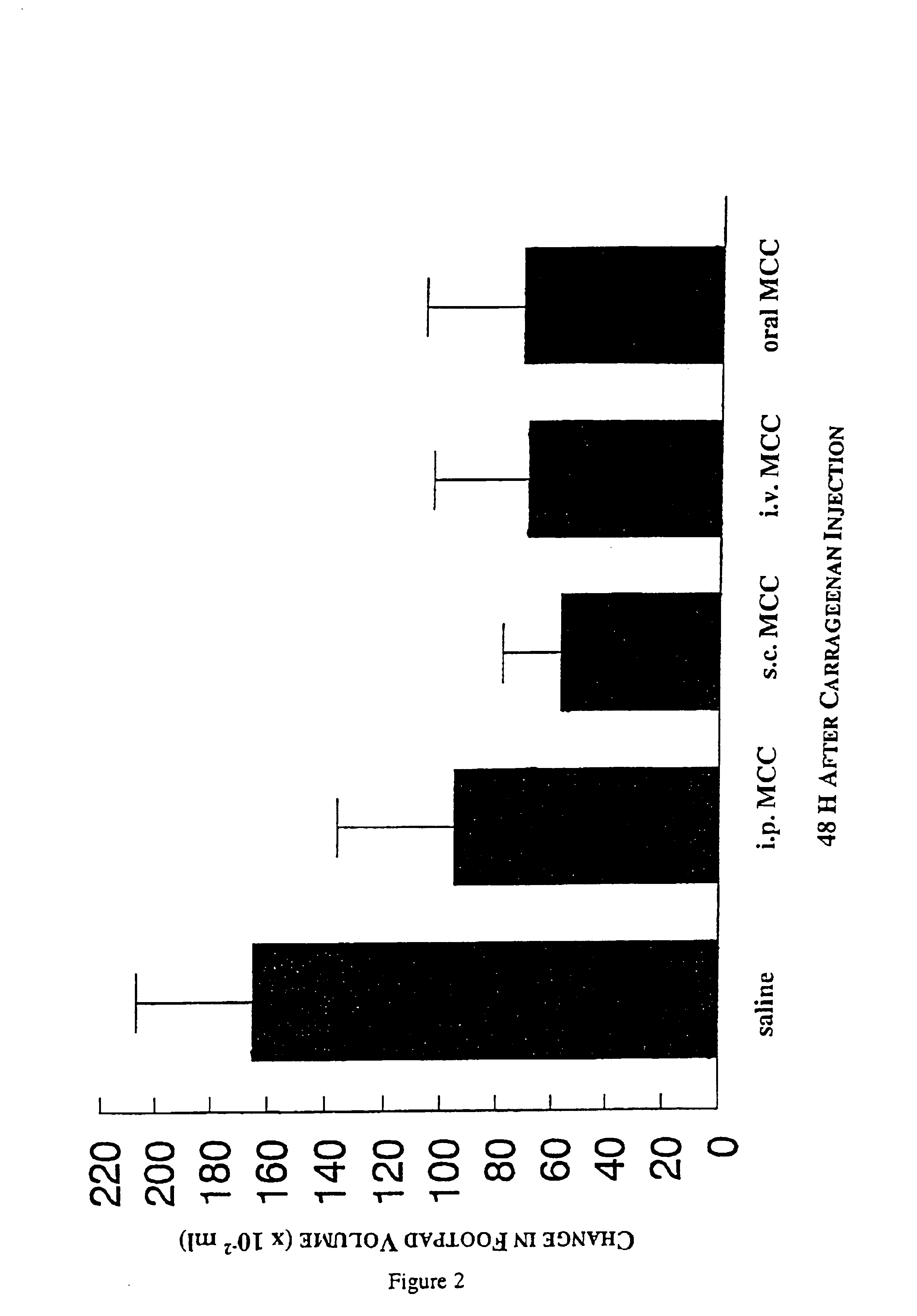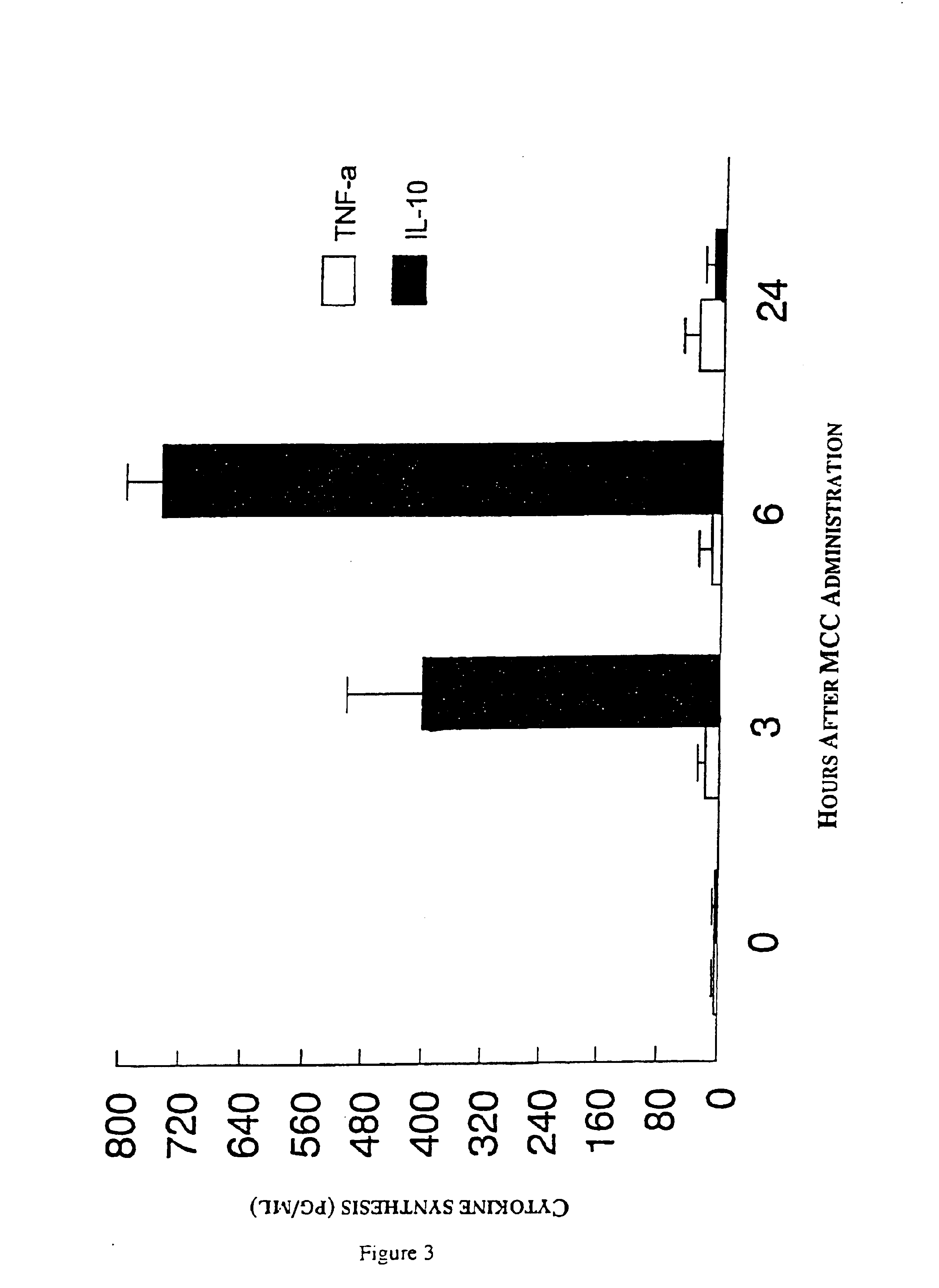Method for the treatment of inflammation
a technology treatment method, which is applied in the field of mycobacterial deoxyribonucleic acid (bdna) preservation, can solve the problems of inability to tolerate certain individuals, numerous undesirable side effects of anti-inflammatory agents, etc., and achieve the effects of reducing the inflammation of colitis, reducing the inflammation of cystitis, and preparing large amounts
- Summary
- Abstract
- Description
- Claims
- Application Information
AI Technical Summary
Benefits of technology
Problems solved by technology
Method used
Image
Examples
example 1
Preparation of MCC
[0040]MCC was prepared from M. phlei as described in International Patent Application No. PCT / CA98 / 00744, which is included by reference herein.
[0041]Briefly, to prepare MCC, M. phlei are grown in liquid medium and harvested. The M. phlei are disrupted, and the solid components of the disrupted M. phlei are collected by centrifugal sedimentation. The solid components are modified by deproteinization with DNase-free trypsin and DNase-free pronase, delipidation with DNase free urea and DNase-free phenol and washing with DNase-free water.
[0042]All reagents used in the preparation of MCC were selected to enhance conservation of the DNA. Unless stated otherwise, MCC was resuspended in DNase-free water or in a pharmaceutically acceptable DNase-free buffer and emulsified by sonication. MCC did not contain endotoxins as determined using a Limulus amebocyte lysate QCL-1000 kit (BioWhittaker, Walkersville, Md.).
example 2
Preparation of BCC from Mycobacterial Species other than M. phlei
[0043]BCC is prepared from mycobacterial species including, but not limited to, M. vaccae, M. chelonei, M. smegmatis, M. terrae, M. duvalii, M. tubeculosis, M. bovis BCG, M. avium, M. Szulgai, M. scrofulaceum, M. xenopi, M. kansaii, M. gastr, M. fortuitous and M. asiaticum as in Example 1.
example 3
Administration of MCC and Induction of Inflammation
[0044]6.7 mg kg−1 MCC in saline (experimental) or saline (control) were administered to female CD-1 mice (Charles River, Saint Constant, Quebec, Canada) intravenously in 0.2 ml; intraperitoneally in 1.0 ml; subcutaneously, into the hind footpad, in 0.05 ml; and, orally, using a feeding needle, in 0.2 ml. Two h later a 1% solution of carrageenan (Sigma-Aldrich, Mississauga, Ontario, Canada) in a final volume of 0.05 ml was injected into the hind footpad of each mouse to induce inflammation. Footpad swelling was quantified by measuring water-displacement at 0, 3, 24, 48, 72 and 96 h after carrageenan injection (Filion et al. British Journal of Pharmacology 122:551-557, 1997).
PUM
| Property | Measurement | Unit |
|---|---|---|
| volume | aaaaa | aaaaa |
| composition | aaaaa | aaaaa |
| volumes | aaaaa | aaaaa |
Abstract
Description
Claims
Application Information
 Login to View More
Login to View More - R&D
- Intellectual Property
- Life Sciences
- Materials
- Tech Scout
- Unparalleled Data Quality
- Higher Quality Content
- 60% Fewer Hallucinations
Browse by: Latest US Patents, China's latest patents, Technical Efficacy Thesaurus, Application Domain, Technology Topic, Popular Technical Reports.
© 2025 PatSnap. All rights reserved.Legal|Privacy policy|Modern Slavery Act Transparency Statement|Sitemap|About US| Contact US: help@patsnap.com



